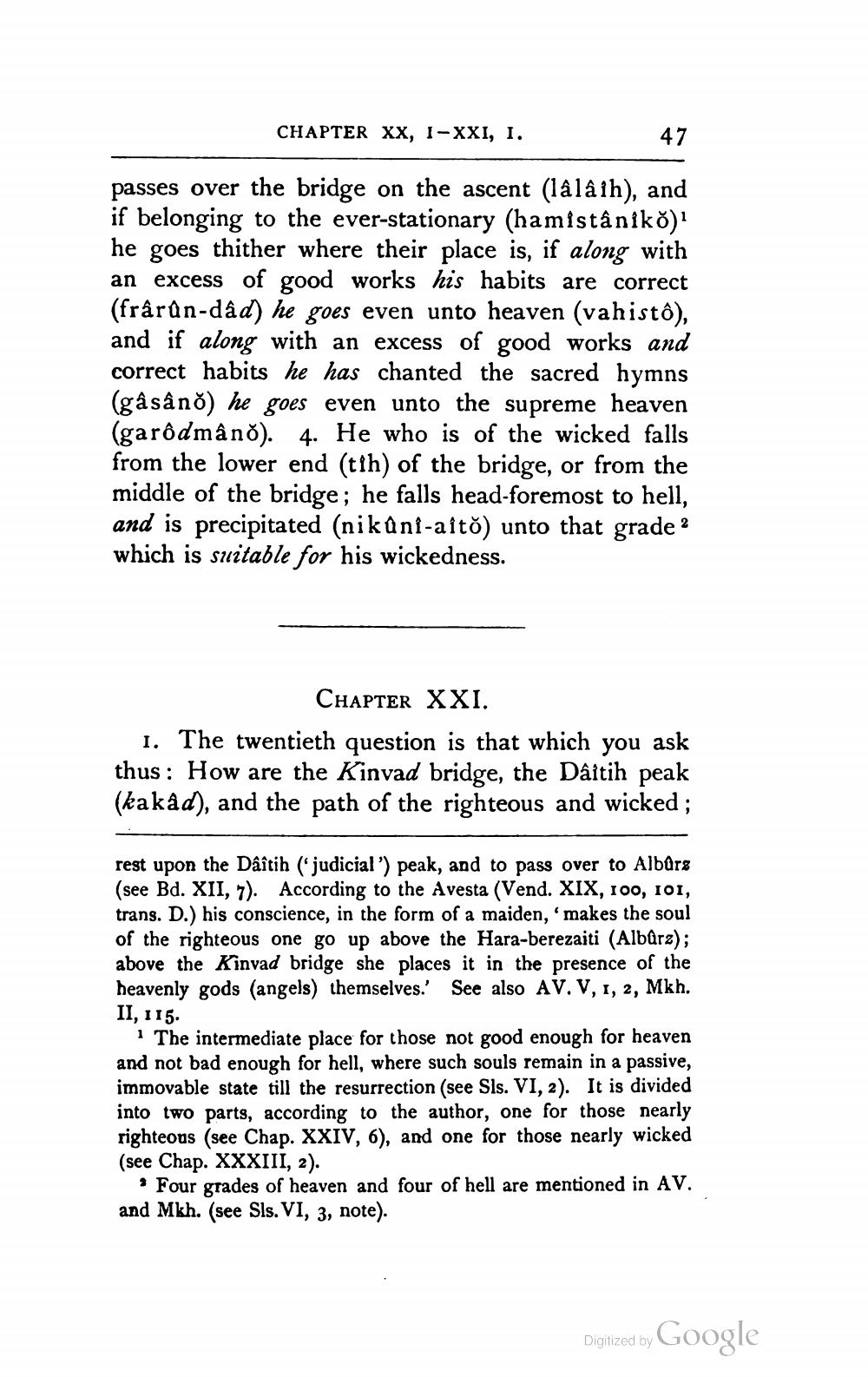________________
CHAPTER XX, 1-XXI, I.
47
passes over the bridge on the ascent (lâlâih), and if belonging to the ever-stationary (hamistâniko)" he goes thither where their place is, if along with an excess of good works his habits are correct (frârûn-dâd) he goes even unto heaven (vahistô), and if along with an excess of good works and correct habits he has chanted the sacred hymns (gâsâno) he goes even unto the supreme heaven (garôdmânð). 4. He who is of the wicked falls from the lower end (tih) of the bridge, or from the middle of the bridge; he falls head-foremost to hell, and is precipitated (nikūni-aito) unto that grade 2 which is suitable for his wickedness.
CHAPTER XXI. 1. The twentieth question is that which you ask thus : How are the Kinvad bridge, the Däitih peak (kakâd), and the path of the righteous and wicked;
rest upon the Dâîtih (judicial') peak, and to pass over to Albars (see Bd. XII, 7). According to the Avesta (Vend. XIX, 100, 101, trans. D.) his conscience, in the form of a maiden, 'makes the soul of the righteous one go up above the Hara-berezaiti (Albârz); above the Kinvad bridge she places it in the presence of the heavenly gods (angels) themselves.' See also AV. V, 1, 2, Mkh. II, 115.
1 The intermediate place for those not good enough for heaven and not bad enough for hell, where such souls remain in a passive, immovable state till the resurrection (see Sls. VI, 2). It is divided into two parts, according to the author, one for those nearly righteous (see Chap. XXIV, 6), and one for those nearly wicked (see Chap. XXXIII, 2).
Four grades of heaven and four of hell are mentioned in AV. and Mkh. (see Sls. VI, 3, note).
Digitized by Google




